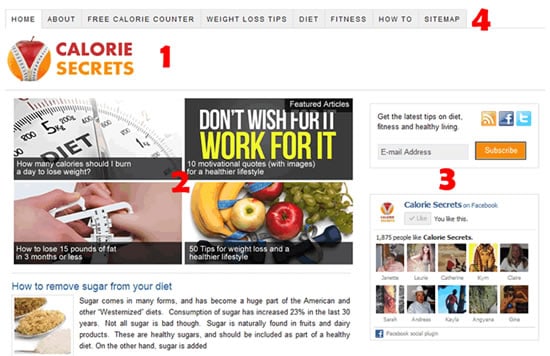The importance of web site structure for an SEO optimized site ,secret guide for blogger
With competition for high organic search engine rankings more intense than ever, companies need to evaluate dozens of aspects of their website to maximize performance. One of the most overlooked characteristics of a well ranked website is the site structure or architecture. The website structure or architecture refers to how the website is organized hierarchically and how individual pages link to each other. While from a user experience perspective it seems obvious that your site should be easily navigable, a good website structure also helps support SEO best practices, and here is why.
Optimizing for searchers
There are two types of searchers to keep in mind when re-structuring a site for maximum SEO value. The first is users/potential customers, who you want to easily find what it is they are looking for on the site. The second includes the search engines themselves, who need to be able to crawl your site to understand where it has value. You might be scratching your head wondering how search engines determine if your site is useful. As search engine algorithms become more advanced, they can build semantic relationships between topics. Therefore, logically, your content should make sense to what the visitor is searching for. This is aided by individual page meta tags and internal linking of pages within your site.
Web Site Structure for an SEO optimized site
The structure of your web site must help users find the information they want in the fastest possible way, this is your primary goal. At the same time it should also make it easy for search engines to crawl the site and provide them with different ‘signals’ so as to: understand what the web site is all about and to convince the bots (search engine crawlers) that it is a high quality site suitable to rank higher in their index.
The home page
The home page is probably the most important page of your blog, web site or online store. This is the place to show off your best content, promote your brand and establish the unique identity of your site. While the design of a home page (colors, images, theme and template) depends on the type of web site and preferences of the blog owner or designer, some elements are essential and these are explained below.
[1] Logo and favicon – Your web site or blog should have a clearly designed logo to distinguish your brand from the competition. If you cannot create your own logo it’s worth investing a few bucks to hire a designer to do for you. Odesk.com is a great place to find logo designers for reasonable prices. Along with the logo you can also create a favorite icon to give your web site a more professional perspective.
[2]Show off your best content – This very important for SEO and it is advice suggested many times by Google. Select 3-4 posts or pages of your web site that you want to promote and link to them from your home page. These should be the pages/posts that you want to perform better in search. You don’t have to place them in the center or the page (as shown above) but make sure that these are linked from your home page.
[3]What’s your site’s primary purpose? – What do you want to achieve from your web site? If you are running a blog (especially if it’s a new blog), your primary purpose may be to get new subscribers to your newsletter and more fans to your Facebook page. Depending on your design the actual position may differ but your site’s primary purpose should be visible from the home page. If you are selling a book or product this should also be made available above the fold. Study the screenshot above and also have a look at the home page of this web site.
My recommendation for new web sites is to concentrate first on building your subscriber list, Facebook fan page, Google+ followers and anything else that can improve the credibility and authority of your web site.
[4]Main Menu – Either above the logo or below the logo, your web site should have a clearly defined main menu. Include in your main menu links to your important categories and pages.
Static VS Dynamic Home page
Many web site owners wonder whether to use static or dynamic Home pages. My recommendation is to use a hybrid home page with both static and dynamic areas.
The static part can include your best content, products or services you are selling or that unique characteristic that distinguishes your web site from the rest.
The dynamic part can include your latest blog posts, latest tweets or FB Page updates.
Updating your home page on a regular basic is an incentive for users to come back and see what’s new and it is also beneficial in terms of SEO to link your latest posts from the most important page of your site.
Essential pages for a high quality site
About Page– A well designed about page improves the credibility and trustworthiness of a web site. Typical items to include in an ABOUT page:
Welcome message – What the web site is about, when it was created etc.



0 Response to "The importance of web site structure for an SEO optimized site ,secret guide for blogger"
Post a Comment